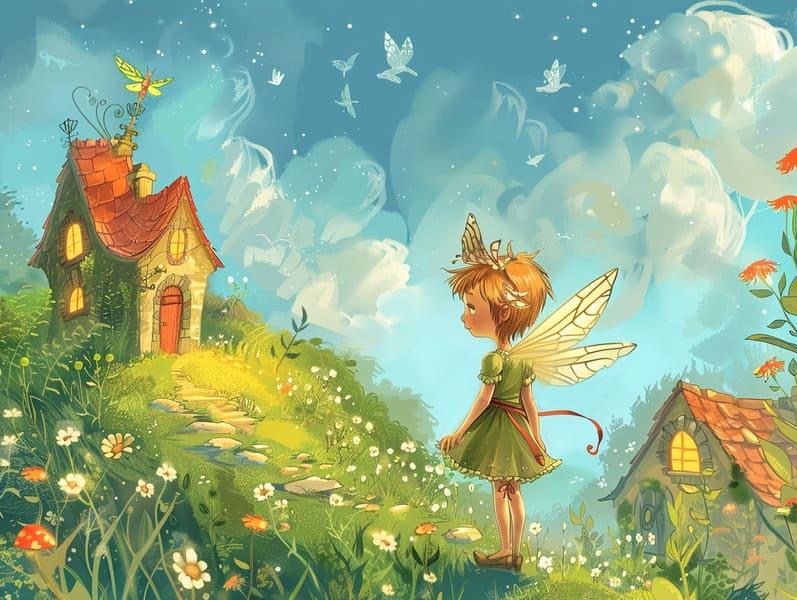The Story Behind Fairy Tales to Read with the Ageless Wonder.
The Story Behind Fairy Tales to Read with the Ageless Wonder.
Blog Article

Ancient fairy tales have enduring presence. These narratives have been shared from one generation to the next centuries before they were ever recorded. They emerged from a variety of civilizations, including Eastern traditions. They were initially told among adults, often carrying themes and messages reflective of the societal norms and beliefs of the time.
Jacob and Wilhelm Grimm, the two Grimm brothers, were among the first to gather many of these beloved stories. Their volume, "Grimm's Fables," included classics like "The Little Glass Slipper," "Little Brother and Little Sister," and "The True Story of Snow White," which have since become classics in the world of children's fairy tales. Similarly, the Danish author's fantastical fairy tales, such as "The Mermaid's Tale," and "The Story of the Ugly Duckling," have gained the love worldwide, cementing their place in the pantheon of treasured fairy tales.
Despite their ancient origins, these stories remain as applicable as ever, especially as children's night stories. These charming stories are now available in various formats, including colorful picture books, magical animations, and digital fairy tales.
Their continued relevance can be credited to several enchanting factors:
Crucial Morals: Ancient fairy tales often convey important moral lessons. Stories like "The Story of the Boy Who Cried Wolf" teach the value of being truthful, while "The Race of the Tortoise and the Hare" stress the traits of determination and unpretentiousness. These narratives offer the young clear distinctions between correct and incorrect, guiding their moral compass in a kind yet important way.
Empathy and Understanding: Traditional fairy tales frequently involve protagonists facing difficulties and adversities, inciting children to relate with their struggles and applaud their triumphs. For instance, "The Tale of Beauty and the Beast" emphasizes the importance of seeing inner beauty to acknowledge the real character of a individual, encouraging tenderness and appreciation.
Cultural Perception: Many ancient fairy tales are infused with the cultural contexts from which they came. Learning from these narratives can provide illuminating insights into different societies, cultivating a sense of world understanding and knowledge.
Fantasy and Imagination: The mythical elements in old fairy tales—magic wands—revitalize children’s fantasies. These tales lead readers to mythical realms, enhancing innovative ideas and a sense of magic that persists a lifetime.
Old fairy tales are not only magical but also edifying. They serve as bewitching tools in developing various cognitive and emotional skills in young readers. When traditional fairy tales are voiced, they promote language skills by teaching new words and intricate sentence structures. This practice also cultivates hearing perception and focus, as the young keep up with the story, anxious to see what happens next.
Furthermore, examining the themes and characters of old fairy tales can cultivate evaluative skills and problem-solving abilities. Young ones are instructed to recognize patterns, predict happenings, and comprehend cause and effect. These examinations also boost young readers utter their thoughts and feelings, boosting their emotional intelligence.
In today’s technological era, the proliferation of free fairy tales online has made these stories more acquirable than ever. Web-based platforms and digital apps share vast collections of timeless fairy tales that can check it out be experienced or listened via anytime, anywhere. Fairy tales voiced are particularly common, making available an enjoyable way for children to engage with these delightful tales. Read-aloud books and read-aloud videos transport characters and settings to life, often joined by bewitching background sounds and instrumentals that augment the tale experience.
The enduring charm of classic fairy tales lies in their ability to alter to contemporary times while preserving their core messages. Contemporary retellings of these stories often showcase more varied characters and modern settings, making them accessible to today’s audience. However, the key lessons of gallantry, kindheartedness, and justice remain unchanged, continuing to touch audiences of all ages.
Fairy tales also offer a sense of calm and knownness. They grant access to a well-arranged narrative with a recognizable beginning, middle, and end, often drawing to a close with the ending of conflicts and the triumph of good over bad. This uniformity can be comforting for young readers, allowing a sense of unchangeability in an dynamic world.
Classic fairy tales continue to delight and coach new generations, maintaining their delight and significance in modern society. As nighttime stories for kids, they highlight a perfect blend of charm and understanding, sustaining moral values, empathy, and creativity. The abundance of digital fairy tales and the favor of fairy tales told out loud affirm that these old narratives remain attainable to new generations.
By protecting and relating these fairy tales, we continue to pay tribute to the rich tapestry of cultural heritage and cultural heritage. Whether you are experiencing a gorgeously illustrated book, discovering a internet library, or playing an read-aloud book, the grandeur of children's fairy tales is always within reach. These fairy tales show us of the persistent force of tales and its ability to bind us across generations and cultures.
Be it you are exploring a artistically illustrated book, delving into a internet library, or playing an voice book, the loveliness of classic fairy tales is always within reach.
These tales illustrate of the unending magic of tales and its ability to hold us together across generations and cultures, establishing a link that delights and instructs alike.